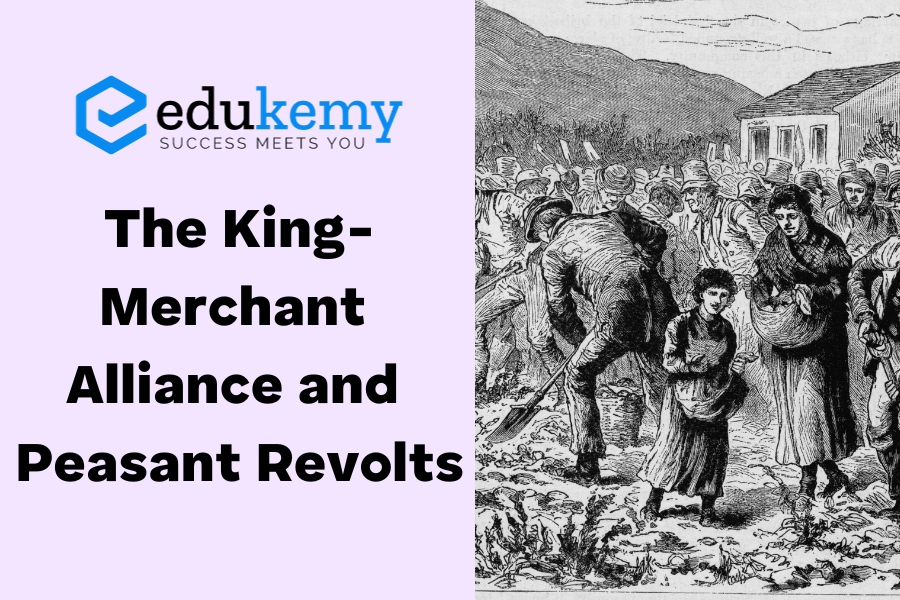
The King-Merchant Alliance, a complex web of political and economic collaboration between monarchs and merchants during medieval times, played a pivotal role in shaping the socio-economic landscape. This alliance often served mutual interests, with kings benefiting from increased revenue through taxation on flourishing trade, while merchants gained protection and privileges from royal decrees. However, the prosperity enjoyed by the elite classes starkly contrasted with the struggles of the peasants, who bore the brunt of heavy taxation and societal inequalities. The discontent among the impoverished agricultural class eventually manifested in the form of peasant revolts, as they sought to challenge the oppressive structures upheld by the alliance. These revolts, fueled by socio-economic grievances, not only posed a threat to the established order but also catalyzed shifts in power dynamics, paving the way for the eventual evolution of societal structures and the emergence of new political ideologies.
During the Middle Ages, a symbiotic relationship developed between the monarchy and the merchant class, driven by shared interests in political power and economic prosperity:
- King’s Agenda:
- Monarchs sought to reduce their reliance on feudal lords and diminish the influence of the Church. They aimed for greater autonomy and control over their realms.
- Merchant Ambitions:
- Merchants aspired for economic freedom and social recognition. The profits derived from trade and commerce elevated their status, and they desired to further expand their trading activities.
The convergence of these goals led to a strategic partnership between the monarchy and the merchant class, with both entities seeking to strengthen their positions in the evolving socio-political landscape.
Contents
- 1 Peasant Revolts:
- 2 Frequently Asked Questions (FAQs) about The King-Merchant Alliance and Peasant Revolts
- 2.1 1. FAQ: What is the King-Merchant Alliance, and what purpose does it serve?
- 2.2 2. FAQ: How did the King-Merchant Alliance impact the common people, especially peasants?
- 2.3 3. FAQ: What were the primary causes of Peasant Revolts during the era of the King-Merchant Alliance?
- 2.4 4. FAQ: Did the King-Merchant Alliance ever address the concerns raised by the peasants during revolts?
- 2.5 5. FAQ: How did the dynamics of the King-Merchant Alliance and Peasant Revolts change over time?
- 3 In case you still have your doubts, contact us on 9811333901.
Peasant Revolts:
- Revolt Against Feudalism:
- In the 14th century, during the Middle Ages, Europe witnessed a series of peasant revolts against the entrenched feudal institutions. Peasants, who had long been subjected to the authority of feudal lords, rebelled against this system of hierarchical oppression.
- Religious Overtones:
- Many peasant leaders incorporated religious doctrines into their revolutionary rhetoric. These doctrines often contradicted the teachings and authority of the Church. This divergence further fueled tensions.
- Decline of Feudalism:
- The peasant revolts, along with other social and economic changes, contributed to the gradual decline of the feudal system. Although it persisted for several more centuries, the seeds of its eventual demise were sown during these tumultuous times.
It’s important to note that while the Feudal system began to erode during the Middle Ages, its complete dissolution only occurred in the 18th and 19th centuries, as various factors, including the rise of capitalism and industrialization, further transformed European societies.
Frequently Asked Questions (FAQs) about The King-Merchant Alliance and Peasant Revolts
1. FAQ: What is the King-Merchant Alliance, and what purpose does it serve?
Answer: The King-Merchant Alliance is a strategic partnership between monarchs and influential merchants aimed at fostering economic growth and political stability. It involves a mutual exchange of support, where the merchants provide financial backing to the monarch in exchange for favorable trade policies and protection. This alliance historically aimed to strengthen the economic power of both parties.
2. FAQ: How did the King-Merchant Alliance impact the common people, especially peasants?
Answer: While the King-Merchant Alliance contributed to overall economic prosperity, its benefits were not evenly distributed. Peasants often bore the brunt of heavy taxation imposed to fund the monarch’s ventures. Additionally, they faced increased pressure as the alliance prioritized urban and merchant interests, leading to discontent among the rural population.
3. FAQ: What were the primary causes of Peasant Revolts during the era of the King-Merchant Alliance?
Answer: Peasant revolts were fueled by a combination of economic exploitation, high taxes, and social inequality. The heavy financial burden imposed on peasants, coupled with their exclusion from the benefits of the Alliance, created resentment. The revolts were also a reaction to oppressive feudal practices and a desire for more equitable distribution of wealth.
4. FAQ: Did the King-Merchant Alliance ever address the concerns raised by the peasants during revolts?
Answer: The response from the Alliance to peasant revolts varied. Some monarchs recognized the need for social reforms and attempted to address grievances, while others resorted to suppression. In certain instances, merchants influenced monarchs to enact policies that slightly eased the burden on peasants. However, the underlying tension between the Alliance and the peasantry persisted.
5. FAQ: How did the dynamics of the King-Merchant Alliance and Peasant Revolts change over time?
Answer: Over time, as societal structures evolved and economic conditions shifted, the King-Merchant Alliance underwent transformations. Some alliances dissolved due to changing political landscapes, while others adapted to new economic realities. Peasant revolts, too, evolved in their nature, incorporating not only economic demands but also aspirations for political representation and social justice. The interplay between the Alliance and Peasant Revolts is a complex aspect of historical dynamics.
In case you still have your doubts, contact us on 9811333901.
For UPSC Prelims Resources, Click here
For Daily Updates and Study Material:
Join our Telegram Channel – Edukemy for IAS
- 1. Learn through Videos – here
- 2. Be Exam Ready by Practicing Daily MCQs – here
- 3. Daily Newsletter – Get all your Current Affairs Covered – here
- 4. Mains Answer Writing Practice – here

